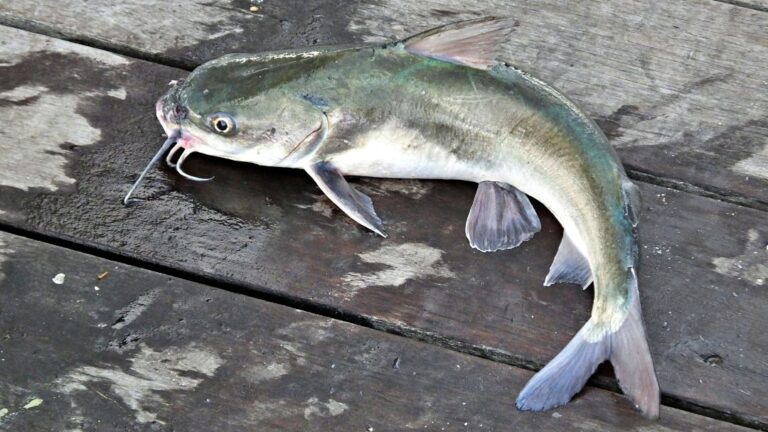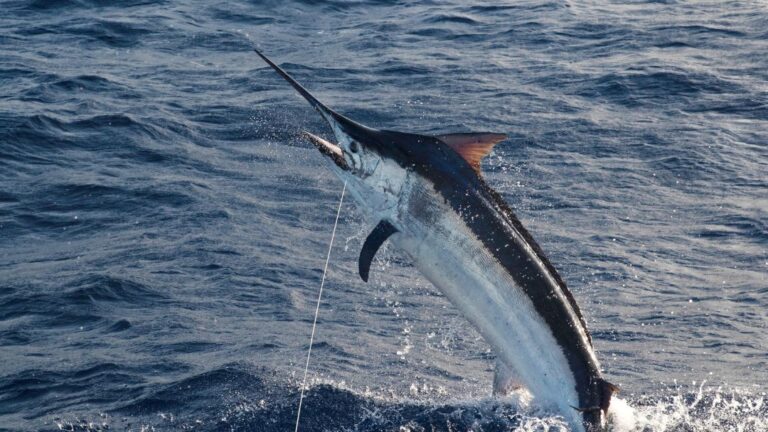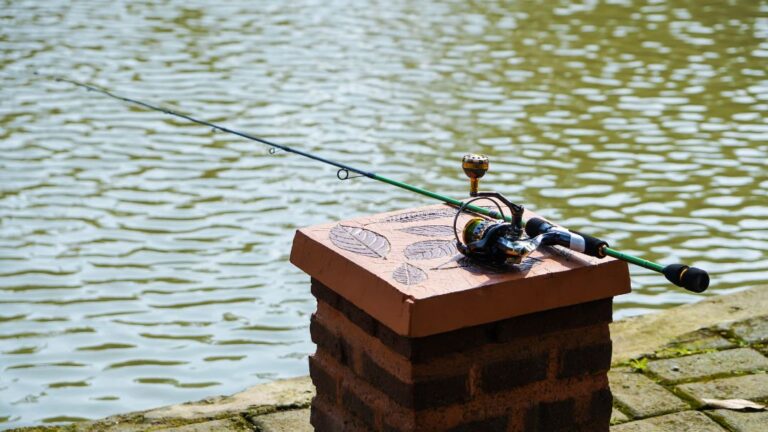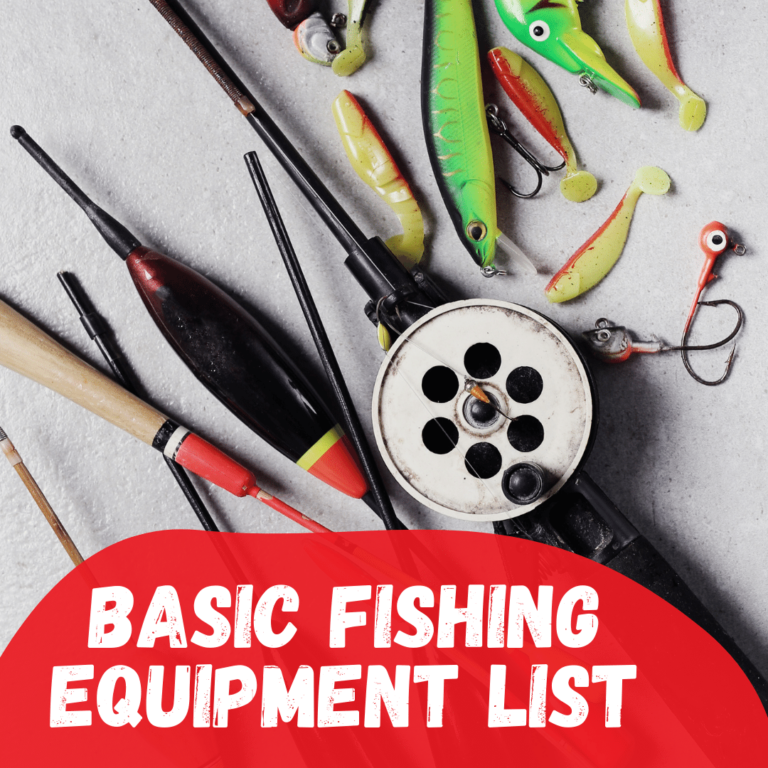Do you know which thing creates a connection between an angler and the fish? It is the fishing line! After the fishing rod for salmon, it is the second most crucial fishing gear. But choosing the right fishing line is the key to dominating the water and enjoying better casting performance.
Which Size Line For Salmon Fishing? The fishing line can be anywhere between 10 pounds to 30 pounds depending on the particular salmon species. Generally, most expert anglers recommend using a line that roughly matches the weight of salmon species
Which Size Line For Salmon Fishing?
A fishing line with a particular rating determines how much stress (in pounds) it can endure before it cracks or breaks.
The ideal fishing line can vary depending on what you are targeting. Salmon fishes are available in various sizes.
The following table shows different types of salmon species and the appropriate fishing line for each category.
| Size Of Salmon Species | Appropriate Fishing Line |
| Small Salmon Species | 10-15 pound line |
| Medium Salmon Species | 15-20 pound line |
| Larger Salmon Species | 20-30 pound line |

Small Salmon Species
Pink Salmon might be on your top list if you want to enjoy tasty salmon. It is one of the smallest species of salmon fish.
The average weight of this fish is 3 to 5 pounds. But a few options are as heavy as 10 to 15 pounds.
You can use 10-15 lbs of fishing line for small salmon species.
However, they are more appropriate for freshwater because their depth level is minimal. Anglers will struggle less to catch their desired fish.
Medium Salmon Species
A 15-20 lb fishing line is the best choice if you are after medium-sized salmon species like Coho Salmon.
The average weight of a Coho Salmon ranges between 8 to 12 pounds. Fighting against this type of fish with such a 15-20 lb fishing line will be easygoing.
Like lighter fishing lines, you don’t have to be concerned about snapping and tangling the fishing rod.
Larger Salmon Species
Giant salmon fish Chinook salmon requires heavier fishing lines. The average weight of a Chinook salmon is 15 to 30 pounds.
Lighter or medium fishing lines can’t handle this heavy fish. You need a 20-30 lb fishing line to fight against larger fish.
It can ensure a better casting performance with greater casting distance.
Is Heavier Fishing Line Always Better For Salmon Fishing?
Heavier fishing line is not always better for your fishing rod, regardless of whatever you are fishing.
The critical rule is selecting the correct line depending on your fishing rod power. It is always tagged as “Ultra-Light,” “Light,” “Medium,” “Heavy,” “Extra-heavy,” etc.
For example, if your fishing rod is heavy, a lighter fishing line can’t handle the extra weight of the rod. The line is likely to crack or break.
On the other hand, a too-heavy fishing line may break a too-light fishing rod. Hence, maintaining a balance between the fishing rod power and fishing line rating is vital.
However, when it comes to throwing lures further, lighter fishing lines perform better than heavier ones.
How To Determine Which Size Fishing Line You Need For Salmon Fishing?
It is crucial to figure out the ideal fishing line for salmon fishing.
A wrong choice may ruin your day, whereas a correct fishing line will positively affect your fishing performance.
The following factors will help you determine how much fishing line you need for salmon fishing.
01. Know Your Targets
The first important factor is having a complete idea about your targets.
If you are going to fish in a new place, talk with other anglers to learn about the size and weight of the salmon fish.
It will help you choose the perfect fishing line for salmon fishing.
02. Swallow Or Deep Water
When fishing in shallow or minimally deep water, a small or medium option appears better.
They usually don’t have too large a species due to limited depth.
On the other hand, heavier fishing line is a must to handle the extra depth level when fishing in deep water.
Lighter fishing lines can’t cut through the water. They will crack or bend within a short time.
03. Fishing Reel Type
What fishing reel for salmons are you using: baitcasting reel or spinning reel? If you are using a baitcasting reel, heavier fishing lines.
It allows you to place the fishing line in a crowded area tactically. Anglers will enjoy better offshore fishing.
On the contrary, spinning reels match better with lighter fishing lines. It allows anglers to spool more lines onto the reel.
In addition, they are less resistant to air and help you achieve better casting action with minimal effort.
04. Wind
Extreme windy conditions limit the movements of fishing lines. Its blows create additional friction.
If the wind is pretty solid and heavy, you want to use heavier fishing lines. You may experience tangling issues.
In contrast, if the wind appears pretty normal or well-behaved, lighter fishing lines will be a problem.
05. Current
Current means the motion of the water, regarding the direction in which it flows.
Lighter fishing lines are better if the current is standstill or not too strong. You don’t need to fight vigorously to control your fishing rod.
However, heavier fishing lines are necessary for stronger currents. Thinner options can’t withstand extreme water movements.
Light fishing lines are likely to break if you use them continuously in a strong current.
06. Trees and other objects
Does your fishing water have a lot of trees and other objects? If so, you want to use heavier fishing lines. Otherwise, the fishing rod will tangle.
Plus, thinner and lighter options can’t withstand the extreme force of objects and tree roots.
But lighter fishing lines are okay to use if there are no trees and objects under the water.
07. Rain
Does your fishing location regularly rain a lot? Or, you might be thinking of going on several trips during the rainy season.
In such a case, heavier fishing lines are a better choice. Water drops create additional force in the fishing water.
A heavy fishing line allows you to move the fishing rod more conveniently around different spots.
However, lighter fishing lures are no problem if your fishing location merely rains.
Bonus Tips To Use The Fishing Line For Salmon Fishing
You have already learned what type of fishing line is the best choice based on fish size.
We have also outlined what factors can influence the choice of a fishing line.
As a bonus, we are mentioning some bonus tips.
Tip 01 —Test Before You Buy
Before buying a fishing line, make sure to test whether it is working perfectly or not.
It may have a damaging issue like line fraying, meaning twisted against the weaving.
Tip 02 —Regularly Replace The Fishing Line
How often do you change the fishing line? Depending on your fishing frequency and technique, it can be after several weeks or months.
Avoid using too-old fishing lines for a long time. It might already become brittle or weaker.
Tip 03 —Maintain A Balanced Motion
Casting into the wind is one of the most common causes of getting tangled.
You can avoid this problem by maintaining a steady and balanced motion.
Tip 04 —Correctly refill the spool
Another common cause of getting tangled is not refilling the spool based on the spinning reel capacity.
A perfectly spooled reel can dramatically decrease tangles. In addition, it improves the overall lifespan of the fishing reel. You will also cast better.
Final Thoughts
Are you still wondering about which size line for salmon fishing? Choosing the right fishing line is crucial to cast better from a further distance.
Don’t think heavier fishing lines are always better. All the essential factors mentioned above will determine how much fishing line to use. Hopefully, the article helped you select the perfect option.






